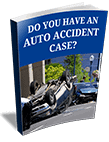Car Accident Fault and Liability
Several criteria, not all of which are clear, decide who is accountable for damages or injuries caused by a vehicle accident. For example, a driver is critically hurt when another driver cuts her off after going onto the street. She may be judged accountable, though, if she was speeding or making an illegal lane change previous to the crash. The determination of who pays for damages or injuries in car accidents is mostly based on motor vehicle legislation, rather than the conventional, common law understanding of “blame.”
This article defines blame in car accidents about common law and motor vehicle rules, as it varies from other forms of claims.
Statutory Recommendations for Car Accident Liability
The automotive insurance industry successfully urged state legislatures to base car accident responsibility on motor vehicle legislation rather than common law conceptions of culpability. Because liability insurance is required in all jurisdictions, this has made it simpler for insurers to argue blame and liability when the opposing party in an accident has broken a traffic law.
For example, if a driver lacks liability insurance, he or she may be unable to recover damages even though the other driver was at least largely to blame for a traffic collision.
Common-Law and Car Accident Liability
In its purest form, “fault” for causing an accident is either created by statute or defined by common law. The four fundamental levels of fault recognized by common law are as follows:
- Negligence
- rash or reckless behavior
- Intentional wrongdoing
- Strict liability rules (regardless of fault)
Negligence is often defined as careless or unintended behavior that causes injury or damage, which is fairly prevalent in car accidents. One can be negligent by either neglecting to do something, such as failing to cede the right-of-way to avoid an accident or actively doing something (such as running a red light). Reckless or wanton behavior is defined as a deliberate disregard for the safety and well-being of others. Accidents involving certain faulty items or extremely dangerous activities may result in strict responsibility, even in the absence of negligence (such as the transporting of explosive chemicals).
Individuals who cause an automobile accident have committed a “tort,” or a private wrong against another, under common law (but not rising to the level of an intentional tort or crime). Tortfeasors are persons who, in the view of the law, have committed torts. Many car insurance plans use the term “tortfeasor” to describe those who are at least partially to blame for an accident.
When a driver engages in purposeful or reckless misbehavior, such as drunk driving, there is rarely a dispute of culpability. When it comes to general carelessness, such as fender-benders or other minor incidents, determining culpability becomes more difficult. More than one driver may be determined to be at least somewhat at fault. When this occurs (when many tortfeasors are involved), state law defines who must pay for property damage and injury to the people involved.
Statutory Violations in the Motor Vehicle
Every state has enacted a slew of regulations governing how drivers must use their automobiles on public highways. Many of these acts are codified versions of common law, while others are legislative efforts.
The crucial thing to understand is that a breach of any of these statutes generates a legal presumption of carelessness. Most states, for example, compel motorcyclists to wear helmets. Failure to do so indicates carelessness, which may have an influence on liability if an accident occurs.
Thus, culpability in an accident can be proved simply by identifying broken legislation. A motorist alleged to have caused an accident due to a statutory breach carries the burden of establishing that this negligent behavior was not the direct cause of the injuries.
For example, a biker who does not wear a helmet suffers significant brain damage when a motorist in a car sideswipes him. The motorist was careless, but so was the rider who was not wearing a helmet.
The easiest method to apply the notion of proximate causation to an automobile accident is to examine if it is true that the accident would not have occurred “but for” the violation.
In the case of the motorcyclist, the helmet would not have avoided the collision, but it would have most likely decreased the biker’s injuries. As a result, the motorist may not be held accountable for the brain injury sustained by the rider.
Get Legal Advice on Car Accident Fault and Liability Issues
If you believe that someone was at fault in an accident in which you were involved, you should consult with an attorney as quickly as possible. Contact an expert automobile accident lawyer such as Pacific Attorney Group now to find out if you may get compensation for your losses.

